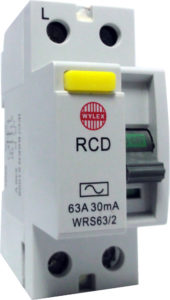Condition Reports explained
You cannot see electricity. Cables are usually hidden inside our walls, and consumer units are often hidden in cupboards, so it is not surprising that we forget to check the condition of our electrical installation for damage or wear and tear.
Faulty and old wiring is one of the main causes or electrical fires in the home. You can reduce the risk of a fire by checking the condition of your cables, switches, sockets and other accessories regularly.
How old is my electrical installation?
Clear signs that can help you tell the age of equipment in the electrical installation in your home include:
- Fixed cables coated in black rubber (stopped being used in the 1960s).
- Fixed cables coated in lead or fabric (used before the 1960s).
- A fuse box with a wooden back, cast iron switches, or a mixture of fuse boxes (used before the 1960s).
- Older round pin sockets (or light switches), braided flex hanging from ceiling roses, brown (or black) switches, or sockets mounted in or no skirting boards (used before the 1960s).
- Light switches on the walls or in bathrooms (used before the 1960s).
However old your electrical installation is, it may get damaged and will suffer from wear and tear. So you should get an electrician to check its condition at least every 10 years or when you move into a new property.
What is the aim of a condition report?
The five main aims of a condition report are:
- Record the results of the inspection and testing to make sure the electrical installation is safe to be used until the next inspection (following any work needed to make it safe)
- Find any damage and wear and tear that might affect safety, and report it
- Find any parts of the electrical installation that do not meet the IET Wiring Regulations
- Help find anything that may cause electric shocks and high temperatures
- Provide and important record of the installation at the time of the inspection, and for inspection testing in the future.
Types of condition report
In general, there are two types of domestic electrical installation condition report:
- Visual condition report – this does not include testing and is only suitable if the installation has been testing recently.
- Periodic inspection reports – this is what we would normally recommend, as it tests the installation and would find any hidden damage.

 An RCD, or residual current device, is a life-saving device which is designed to prevent you from getting a fatal electric shock if you touch something live, such as a bare wire. It can also provide some protection against electrical fires. RCDs offer a level of personal protection that ordinary fuses and circuit-breakers cannot provide.
An RCD, or residual current device, is a life-saving device which is designed to prevent you from getting a fatal electric shock if you touch something live, such as a bare wire. It can also provide some protection against electrical fires. RCDs offer a level of personal protection that ordinary fuses and circuit-breakers cannot provide.
